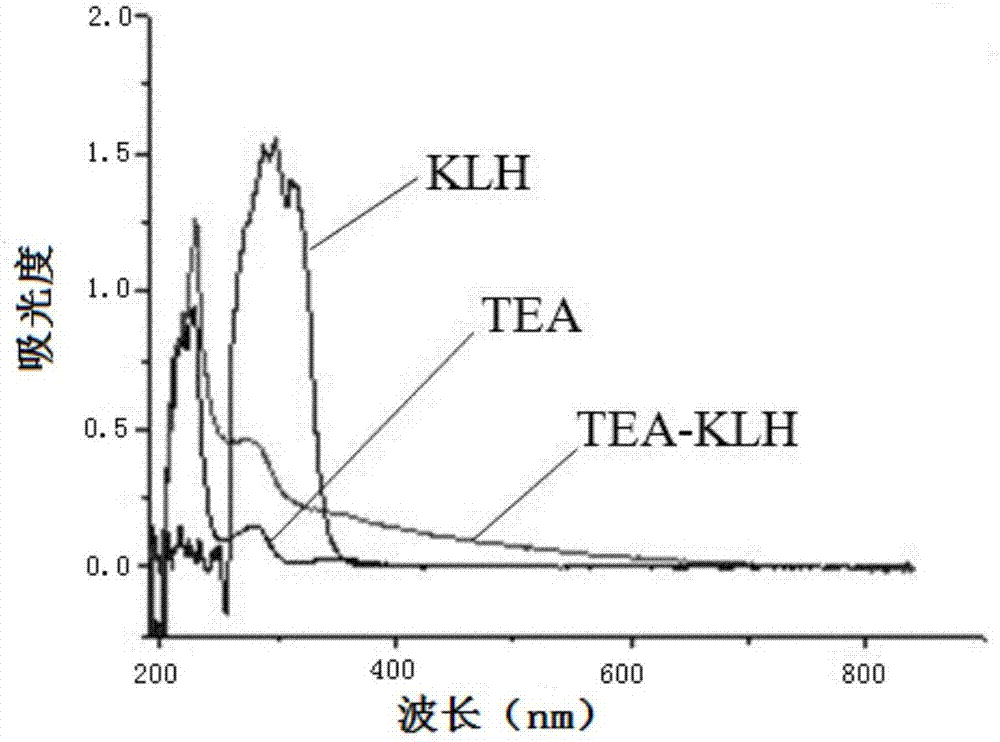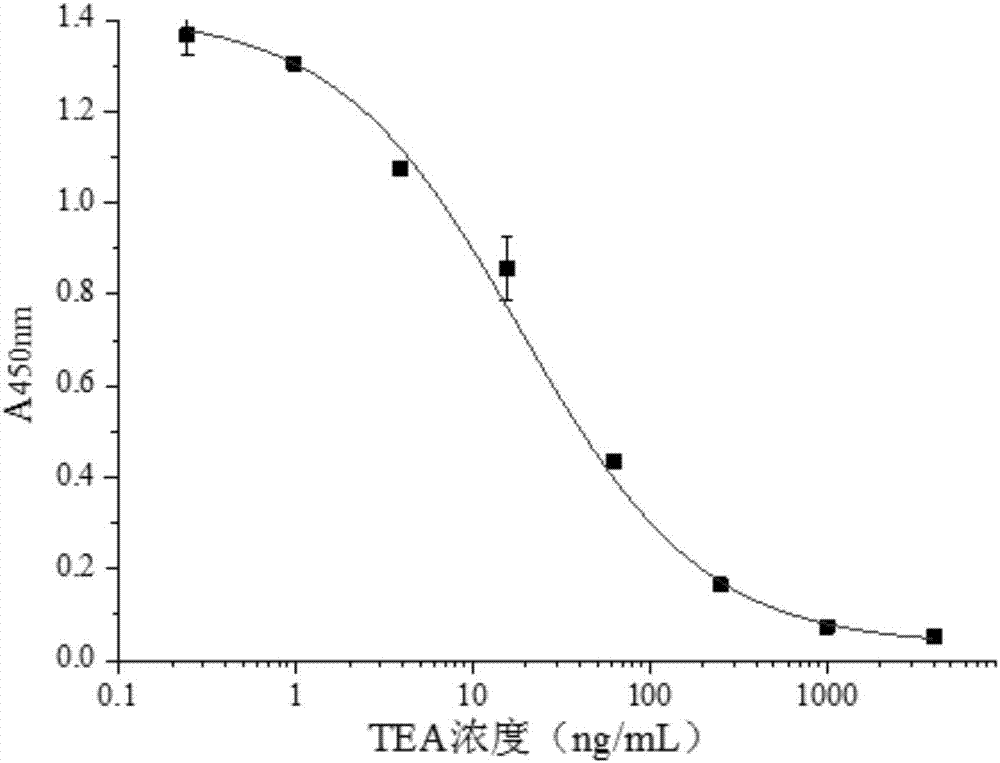Monoclonal antibody of tenuazonic acid and its enzyme-linked immunosorbent assay method
A technology of Alternaria alpendorf acid and Alternaria necrotic acid monoclonal, which is applied in the field of monoclonal antibody and enzyme-linked immunoassay detection of Alternaria alpenoids acid, which can solve the problem of large capital investment and time-consuming , the operation process is cumbersome and other problems, to achieve the effect of low cost, good correlation and good specificity
- Summary
- Abstract
- Description
- Claims
- Application Information
AI Technical Summary
Problems solved by technology
Method used
Image
Examples
Embodiment 1
[0054] Example 1 Preparation and Characterization of Alternarinic Acid Immunogen
[0055] 1. Preparation of alternarinic acid hapten
[0056] 50mg alternarinic acid (TEA, Mw=197.1) and 50mg carboxymethylhydroxylamine hemihydrochloride (CMO, Mw=109.3) were dissolved in 4.0mL, 2.0mL mixed solvent (methanol:pyridine:water =1:4:1), then slowly add the dissolved CMO solution into the dissolved TEA solution, mix evenly, place in an oil bath and heat under reflux at 70°C for 15h. After the reaction (monitor whether the TEA is completely reacted, if not, the reaction can be continued), the mixture is dried under reduced pressure, and 3.0 mL of 2 mol / L HCl solution is added to dissolve the dry matter. The compound in the aqueous phase was extracted several times with dichloromethane, and the organic phases were combined and concentrated under reduced pressure to obtain a light brown oil. Purification by dichloromethane / n-hexane reprecipitation gave a light brown powder, which was the...
Embodiment 2
[0063] The preparation of embodiment 2 alternarinic acid monoclonal antibody
[0064] 1. Animal immunity
[0065] When 6-month-old female Balb / C mice were immunized for the first time, the amount of immunogen injected was 0.1 mL / mouse, and 1 mg / mL of immunogen was added with an equal volume of Freund's complete adjuvant, and the fully emulsified liquid was placed in a small Inject subcutaneously at multiple points on the back and abdomen of the mouse, about 200 μl per point; perform the second immunization 21 days later, the immunization dose is 0.1 mL / rat, and emulsify with Freund's incomplete adjuvant; after that, boost the immunization twice every 14 days, and generally co-immunize 5 times. In this experiment, after the third immunization and the fifth immunization, blood was collected 7 days later for antiserum titer determination. Three days before the cell fusion, the mice were boosted by direct intraperitoneal injection of 0.1 mL of the immunogen (without adjuvant). ...
Embodiment 3
[0087] Example 3 Mass Preparation of Alternarinic Acid Monoclonal Antibody
[0088] 1. Antibody secretion and expression
[0089] After the hybridoma cell clones secreting specific monoclonal antibodies are obtained, monoclonal antibodies are usually produced in large quantities by in vitro culture and in vivo induction of monoclonal antibodies in animals. The conventional method is: inject liquid stone mole intraperitoneally in more than a dozen Balb / c mice over 8 weeks old in advance, at a dose of 0.5 mL / mouse, and inject hybridoma cells into the peritoneal cavity of the mice 1 to 2 weeks later. . Observe the state of the mice every day after cell inoculation, especially from the seventh day onwards, the spirit of the mice will appear sluggish, and the abdominal cavity will swell. At this time, it is necessary to pay close attention to the state of the mice. Collect ascites aseptically, centrifuge the collected ascites at 12000r / min for 10 min, remove the upper layer of fa...
PUM
 Login to View More
Login to View More Abstract
Description
Claims
Application Information
 Login to View More
Login to View More - R&D
- Intellectual Property
- Life Sciences
- Materials
- Tech Scout
- Unparalleled Data Quality
- Higher Quality Content
- 60% Fewer Hallucinations
Browse by: Latest US Patents, China's latest patents, Technical Efficacy Thesaurus, Application Domain, Technology Topic, Popular Technical Reports.
© 2025 PatSnap. All rights reserved.Legal|Privacy policy|Modern Slavery Act Transparency Statement|Sitemap|About US| Contact US: help@patsnap.com



